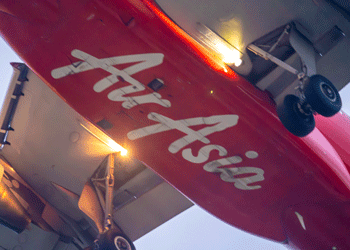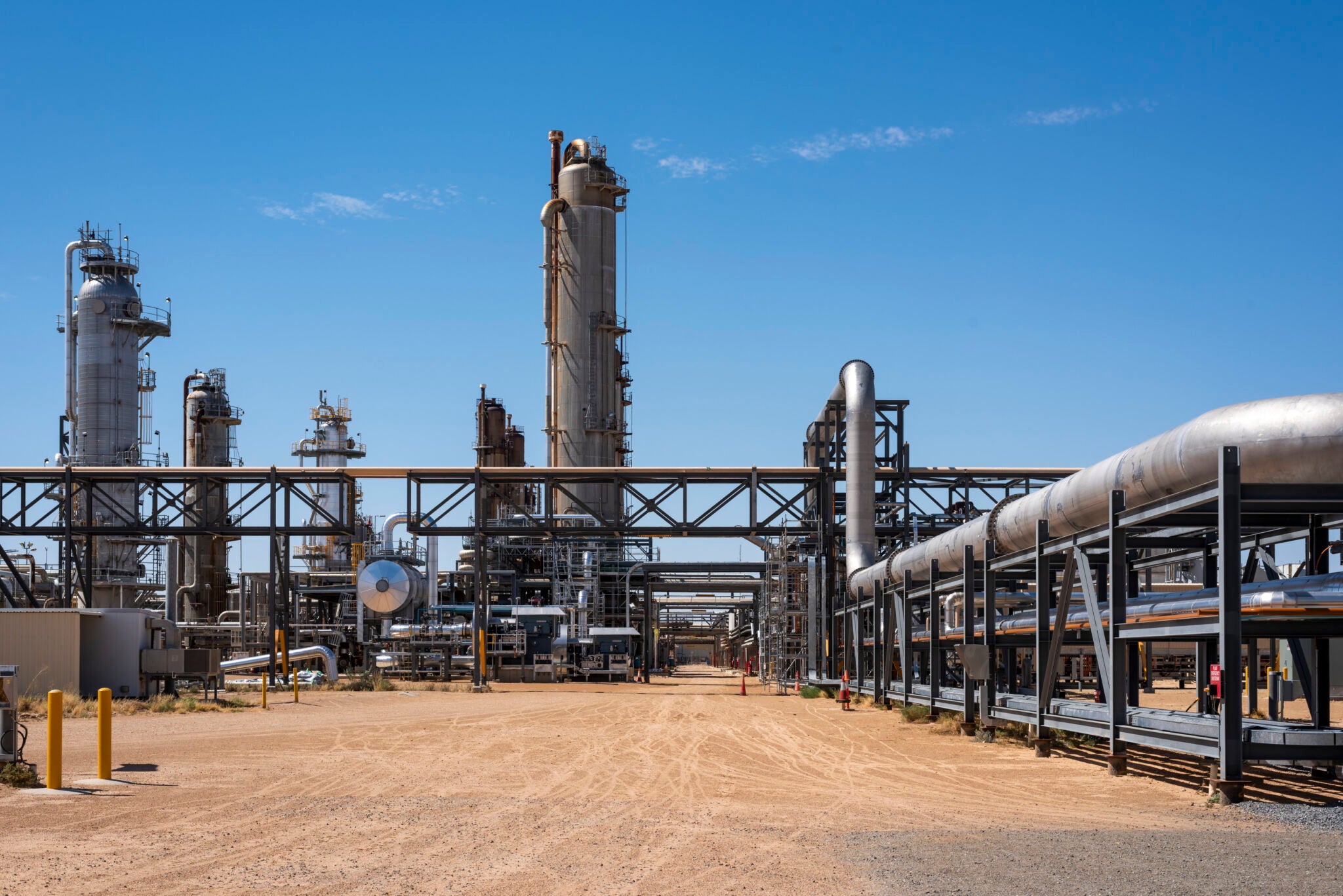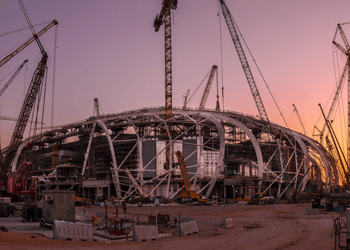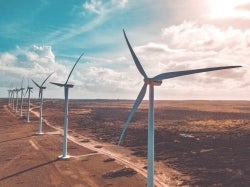Dubai tunnels bid list due before end of January
6 January 2025

The list of prequalified developers for the first four packages of the $22bn Dubai Strategic Sewerage Tunnels (DSST) project will be announced before the end of January 2025.
According to an industry source, the project client, Dubai Municipality, is finalising the list, which "may include some surprises" in terms of the companies that have passed the prequalification process.
Potential investors submitted their statements of qualifications (SoQs) for the contracts to develop and operate various packages of the project in October 2024.
MEED reported that the municipality received SoQs from over a dozen companies, including several prequalified as engineering, procurement and construction (EPC) contractors for the project’s first four packages.
According to industry sources, the companies that were keen to prequalify as investors or sponsors of the planned public-private partnership (PPP) project include:
- Abrdn Investcorp Infrastructure Investments Manager (UK)
- Besix (Belgium)
- China Railway Construction Corporation (CRCC)
- China Railway Engineering Group (CREG)
- China State Construction Engineering Corporation (China)
- Itochu (Japan)
- Nesma Company (Saudi Arabia)
- Plenary (Australia)
- Samsung C&T (South Korea)
- Vision Invest (Saudi Arabia)
- Webuild (Italy)
The request for proposals for the project's first two packages will be issued soon after the list of prequalified investors is announced.
MEED previously reported that the bidders for the PPP packages will be prequalified consortiums comprised of sponsors or investors, EPC contractors, and operations and maintenance contractors.
The overall project will require a capital expenditure of about AED30bn ($8bn), while the whole-life cost over the full concession terms of the entire project is estimated to reach AED80bn.
The investor prequalification process for the scheme comes after the client prequalified EPC contractors that can partner with the developers or investors to bid for the contracts.
MEED understands that packages J1 and W will be tendered together as separate contracts first, followed by J2 and J3, with the requests for proposals to be issued sequentially, staggered about six to 12 months apart.
DSST packages
Under the current plan, the $22bn DSST project is broken down into six packages, which will be tendered as PPP packages with concession periods lasting between 25 and 35 years.
The first package, J1, comprises Jebel Ali tunnels (North) and terminal pump stations (TPS). The tunnels will extend approximately 42 kilometres (km), and the links will extend 10km.
The second package, J2, covers the southern section of the Jebel Ali tunnels, which will extend 16km and have a link stretching 46km.
The third package, W for Warsan, comprises 16km of tunnels, TPS and 46km of links.
J3, the fourth package, comprises 129km of links.
J1, J2, W and J3 will comprise the deep sewerage tunnels, links and TPS (TLT) components of the overall project.
J1, J2 and W will be procured under a design-build-finance-operate-maintain model with a concession period of 25-35 years.
J3 will be procured under a design-build-finance model with a concession period of 25-35 years. Once completed, Dubai Municipality will operate J3, unlike the first three packages, which are planned to be operated and maintained by the winning PPP contractors.
The project’s remaining two packages entail expanding and upgrading the Jebel Ali and Warsan sewage treatment plants. MEED understands that these packages will be procured at a later stage.
Exclusive from Meed
-
 Bahrain’s willingness to disrupt takes flight with Air Asia
Bahrain’s willingness to disrupt takes flight with Air Asia14 November 2025
-
 Contractors prepare bids for Aramco gas compression project
Contractors prepare bids for Aramco gas compression project13 November 2025
-
 Aramco Stadium races towards completion
Aramco Stadium races towards completion12 November 2025
-
 Oman signs PPA for 125MW Dhofar 2 wind project
Oman signs PPA for 125MW Dhofar 2 wind project12 November 2025
-
 Hitachi wins Alexandria Raml tram systems deal
Hitachi wins Alexandria Raml tram systems deal12 November 2025
All of this is only 1% of what MEED.com has to offer
Subscribe now and unlock all the 153,671 articles on MEED.com
- All the latest news, data, and market intelligence across MENA at your fingerprints
- First-hand updates and inside information on projects, clients and competitors that matter to you
- 20 years' archive of information, data, and news for you to access at your convenience
- Strategize to succeed and minimise risks with timely analysis of current and future market trends

Related Articles
-
 Bahrain’s willingness to disrupt takes flight with Air Asia
Bahrain’s willingness to disrupt takes flight with Air Asia14 November 2025
 Commentary
Commentary
Colin Foreman
EditorAs the smallest economy in the GCC, Bahrain has long understood that its competitive edge lies in being agile and prepared to disrupt established economic models.
This proactive approach began decades ago with the deregulation of its telecoms sector, positioning it ahead of many GCC peers in opening that market. More recently, the same strategic foresight emerged in the fintech space with the early adoption of regulatory sandboxes and a supportive digital finance ecosystem.
Bahrain’s disruptive lens is now focused on the aviation sector. At the Gateway Gulf investor forum in Manama on 3 November, Bahrain signed a letter of intent with Malaysia-headquartered Capital A Berhad and Air Asia. The agreement covers the establishment of a hub in Bahrain as low-cost carrier Air Asia and its related businesses expand beyond Asia into new markets, including Europe and Africa.
A hub in Bahrain, which is located to the west of its existing hubs in Asia, will allow Air Asia to connect to the European and African markets, allowing it to develop a network that will be a low-cost alternative to the full-service airlines based in the Gulf that also bridge east and west, including Bahrain’s flag carrier Gulf Air.
Bahrain and Air Asia will not be competing on scale; instead, they will disrupt with lower prices. This agility will allow the kingdom to carve out a distinctive niche in an otherwise highly competitive market.
The strategic pivot is made viable by recent, essential capital investment in aviation infrastructure. A new terminal building was opened at Bahrain International airport in 2022. This has significantly increased passenger capacity and modernised operations, creating an attractive platform for a major international low-cost carrier like Air Asia to base its extensive operations.
https://image.digitalinsightresearch.in/uploads/NewsArticle/15090817/main.gif -
 Contractors prepare bids for Aramco gas compression project
Contractors prepare bids for Aramco gas compression project13 November 2025

Register for MEED’s 14-day trial access
Saudi Aramco is making progress with the main contract tendering process for a project to boost gas compression capacity at the Shedgum and Uthmaniya processing plants in the kingdom’s Eastern Province.
The Shedgum and Uthmaniya plants currently receive approximately 870 million cubic feet a day (cf/d) and 1.2 billion cf/d of Khuff raw gas, respectively.
Through this multibillion-dollar project, Aramco aims to increase the compression and processing capacity of the two plants, as well as to construct new pipelines to enhance gas transport.
Contractors are preparing bids for several engineering, procurement and construction (EPC) packages of the Shedgum and Uthmaniya gas compression capacity expansion project. Aramco has set a bid submission deadline of 17 November, according to sources.
The Saudi energy giant is understood to have started the solicitation of interest process for the main EPC contract tendering exercise in the fourth quarter of last year.
Aramco then issued the tenders for the EPC packages of the scheme during the second quarter of this year and set an initial bid submission deadline of 17 August, the sources said.
In line with its aim of increasing gas production and processing capacity by 60% by 2030, with 2021 as its baseline, Aramco is investing significant capital in gas projects in the kingdom this year.
Aramco’s capital expenditure (capex) in the third quarter of 2025 stood at $12.55bn, a marginal year-on-year increase of 2%. For the first nine months of the year, the firm registered capex of $37.41bn, an increase of 3.38% compared to the same period last year.
The company previously announced capital investment guidance in the range of $52bn-$58bn for 2025, excluding around $4bn of project financing.
ALSO READ: Aramco turns attention to strategic projects
 READ THE NOVEMBER 2025 MEED BUSINESS REVIEW – click here to view PDF
READ THE NOVEMBER 2025 MEED BUSINESS REVIEW – click here to view PDFMena players up the ante in global LNG production race; Investment takes UAE non-oil economy from strength to strength; Project finance activity draws international lenders back to market
Distributed to senior decision-makers in the region and around the world, the November 2025 edition of MEED Business Review includes:
> AGENDA 1: Gulf LNG sector enters a new prolific phase> INDUSTRY REPORT 1: Region sees evolving project finance demand> INDUSTRY REPORT 2: Iraq leads non-GCC project finance activity> GREEN STEEL: Abu Dhabi takes the lead in green steel transition> DIGITISATION: Riyadh-based organisation drives digital growth> UAE MARKET FOCUS: Investment shapes UAE growth storyTo see previous issues of MEED Business Review, please click herehttps://image.digitalinsightresearch.in/uploads/NewsArticle/15075053/main4642.jpg -
 Aramco Stadium races towards completion
Aramco Stadium races towards completion12 November 2025

Register for MEED’s 14-day trial access
The Aramco Stadium in Khobar is moving forward at an impressive pace as the fast-track project races towards completion in 2026.
The 47,000-seat stadium will be the new home for the Aramco-owned Al-Qadsiah Club and a key venue for the 2027 AFC Asian Cup and the 2034 Fifa World Cup.
The project’s progress stems from detailed planning and an accelerated delivery strategy. The project was conceived in May 2023, with the design process, managed by Aramco, commencing shortly thereafter.
“We completed the design within six months,” said Mohammed Subhi, the Aramco Stadium’s project manager.

The project advanced quickly due to thorough planning and a fast-track delivery approach. Initiated in May 2023, the design phase—overseen by Aramco—was completed within six months
An early engagement approach with the main contractor – a joint venture of Besix and Al-Bawani – was instrumental in maintaining momentum. This partnership began early in 2024, allowing for collaborative input on critical construction elements.
This upfront collaboration minimised pre-construction time, ensuring a rapid transition to site work.
Engineering challenges
 The stadium’s architectural design, inspired by the natural whirlpools of the Gulf and featuring interwoven transparent sails, presents significant engineering challenges, particularly in the structural steel and façade work. For spectator comfort, the stadium is equipped with full cooling systems and designed to the highest international standards.
The stadium’s architectural design, inspired by the natural whirlpools of the Gulf and featuring interwoven transparent sails, presents significant engineering challenges, particularly in the structural steel and façade work. For spectator comfort, the stadium is equipped with full cooling systems and designed to the highest international standards.Logistics management is another crucial facet of the project, which is located in central Khobar. With thousands of workers on site, the movement of materials is tightly controlled to minimise community disruption.
“We control how many trucks can enter the site and at what time. For example, we cannot cast concrete during the day. It has to be after 6pm, up until the early morning,” said Subhi.
A key priority on site is health and safety, an area where the organisation’s legacy from its oil and gas operations is clearly visible. Subhi explains that the principle of health and safety is part of the company’s DNA and is embodied in the deployment of advanced technology and rigorous standards, which have collectively resulted in over 10 million safe working hours to date.
The project employs a sophisticated Smart Safety Command Centre (SCC), which utilises artificial intelligence-based monitoring and 24/7 surveillance. One key feature of the centre is the crane collision prevention system – a key technological advancement in heavy machinery coordination and a first for the region.
“We have tower cranes and crawler cranes talking to each other. The anti-collision system means cranes talk to each other without human interference, and they automatically shut down when they are too close to each other,” said Subhi.

A key technological advancement is the crane collision prevention system, which means the cranes talk to each other and shut down if they become too close
In addition to ground operations, the project is leveraging aerial technology to mitigate risk in high-altitude work.
“We have used drones for the inspection of the cranes and inspection of the steel structure itself to minimise the risk of working at height,” said Subhi.

Drones have been adopted on-site to mitigate the risk of working at height
Worker welfare
The project’s commitment extends beyond mere regulatory compliance to comprehensive worker welfare, establishing a high standard for construction sites in the region.
With current staffing reaching approximately 11,000 direct and indirect workers, welfare provisions are a core priority, linking directly back to Aramco’s corporate standards.
In a region where extreme heat is a constant challenge, the project has implemented advanced heat stress management protocols. This includes the installation of heat sensors with alarm systems, mandatory work stoppage during peak heat hours and regular briefings on heat exhaustion symptoms. Fully air-conditioned rest areas are provided for breaks and meals.
Aramco is also committed to developing national talent. A significant proportion of the staff are young, and about 20% of the team are women.
The relationship with the joint-venture contractor is defined by collaboration rather than traditional client-contractor hierarchy. “We are one team, working together,” said Subhi. This approach has fostered a cooperative environment that is accelerating the on-site progress towards the 2026 completion goal.
https://image.digitalinsightresearch.in/uploads/NewsArticle/15073939/main.gif -
 Oman signs PPA for 125MW Dhofar 2 wind project
Oman signs PPA for 125MW Dhofar 2 wind project12 November 2025
Singapore's Sembcorp Utilities and local firm OQ Alternative Energy (OQAE) have won a contract to develop the 125MW Dhofar 2 wind independent power project in Oman.
The contract was awarded by state offtaker Nama Power & Water Procurement Company (Nama PWP) under a 20-year power purchase agreement (PPA).
Under the PPA, Sembcorp and OQAE will form a joint venture to build, own and operate the wind farm, which will supply power to Nama PWP once operational.
The equity split will give Sembcorp 75% and OQAE 25%, a source close to the project told MEED.
Nama PWP said that it will allocate a portion of contracted works for the Dhofar 2 project to Omani small and medium-sized enterprises under its in-country value programme.
The project is expected to begin commercial operations in the third quarter of 2027.
The facility, valued at about OR43m ($112m), will be located on a 12-square-kilometre site in Dhofar Governorate.
The project comprises 20 Windey WD200 turbines, each with a 6.25MW capacity. Each turbine stands 215 metres tall and will be connected to the national grid via a 400kV substation.
The development will provide clean electricity to more than 18,000 homes and will cut carbon dioxide emissions by about 158,000 tonnes a year.
It is also expected to generate about 396,754 megawatt-hours and free up around 76 million cubic metres of natural gas annually.
Sembcorp has over 1.1GW of energy assets in Oman. In September, the firm signed a new 10-year power and water purchase agreement with Nama PWP for its Salalah independent water and power plant.
According to Nama PWP, the offtaker has contracted 26 water and desalination plants, exceeding $11bn in investment, over the past 15 years.
Chief energy transition officer at Nama PWP, Abdullah Bin Rashid Al-Sawafi, said the company "plans to attract a further $5bn over the next five years, mainly in renewable energy and storage technologies".
This includes an extra 9GW of renewable energy capacity by 2030, representing 60% of total contracted capacity.
Oman aims to have 30% of its electricity generation from renewable sources by the same year.
 READ THE NOVEMBER 2025 MEED BUSINESS REVIEW – click here to view PDF
READ THE NOVEMBER 2025 MEED BUSINESS REVIEW – click here to view PDFMena players up the ante in global LNG production race; Investment takes UAE non-oil economy from strength to strength; Project finance activity draws international lenders back to market
Distributed to senior decision-makers in the region and around the world, the November 2025 edition of MEED Business Review includes:
> AGENDA 1: Gulf LNG sector enters a new prolific phase> INDUSTRY REPORT 1: Region sees evolving project finance demand> INDUSTRY REPORT 2: Iraq leads non-GCC project finance activity> GREEN STEEL: Abu Dhabi takes the lead in green steel transition> DIGITISATION: Riyadh-based organisation drives digital growth> UAE MARKET FOCUS: Investment shapes UAE growth storyTo see previous issues of MEED Business Review, please click herehttps://image.digitalinsightresearch.in/uploads/NewsArticle/15073043/main.jpg -
 Hitachi wins Alexandria Raml tram systems deal
Hitachi wins Alexandria Raml tram systems deal12 November 2025
Register for MEED’s 14-day trial access
Hitachi Rail has announced that it has won a contract related to the modernisation and upgrade of the Alexandria Raml tram network in Egypt.
Hitachi Rail said it will deliver advanced signalling and communications systems, an operational control centre and supervisory control and data acquisition, security systems with CCTV cameras and access control, passenger information and on-board equipment.
The contract was awarded by a joint venture of Hassan Allam and Arab Contractors.
The project scope includes rehabilitating a 13.2-kilometre tram line, constructing a maintenance depot, developing elevated viaducts and upgrading 24 stations.
The project will reduce journey times from 60 to 35 minutes by increasing the operational speed on the line from 11 kilometres an hour (km/h) to 21km/h. The project will also increase the hourly capacity from 4,700 to 13,800 passengers in each direction.
UK analytics firm GlobalData expects the Egyptian construction industry to grow by 6.5% in real terms in 2025, supported by investments in oil and gas, industrial and housing construction projects. According to the Central Bank of Egypt, the country’s average construction production index grew by 5.8% year-on-year in the first 10 months of 2024.
GlobalData says the construction industry's output is expected to register an annual average growth rate of 8% in 2026-29, supported by investments in commercial, renewable energy and transport infrastructure projects, coupled with the government’s target of developing 10GW of renewable energy projects by 2028 under the Nexus of Water, Food and Energy Programme.
The infrastructure construction sector is expected to expand by 4.4% in real terms in 2025 and record an annual average growth rate of 7% in 2026-29, supported by government plans to continue its spending on transport infrastructure, ports and terminals.
https://image.digitalinsightresearch.in/uploads/NewsArticle/15073050/main.jpg

